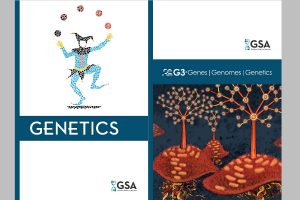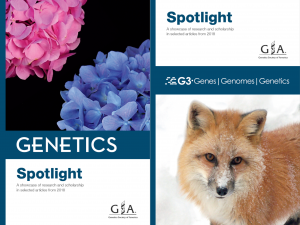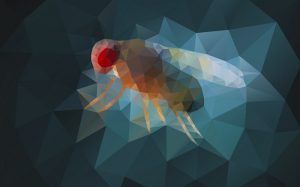Enter your address to receive notifications about new posts to your email.
Articles tagged G3 Journal
(248 results)
-
GSA Journals Spotlight 2019
The GSA Journals, GENETICS and G3: Genes|Genomes|Genetics, are proud to present our annual Spotlight booklets for research published in 2019. Each Spotlight is a showcase of the excellent research and scholarship published over the course of the year, along with a selection of striking images submitted by our authors. Browse the 2019 GENETICS Spotlight. Browse the 2019 G3 Spotlight.
-
GSA Journals Spotlight 2018
The GSA Journals, GENETICS and G3: Genes|Genomes|Genetics, are proud to present our annual Spotlight booklets for research published in 2018. Each Spotlight is a showcase of the excellent research and scholarship published over the course of the year, along with a selection of striking images submitted by our authors. Browse the 2018 GENETICS Spotlight. Browse the 2018 G3 Spotlight.
-
Three GENETICS articles from 2018 recognized with Editors’ Choice Awards
Congratulations to the winners of the Editors’ Choice Awards for outstanding articles published in GENETICS in 2018! The journal’s Editorial Board considered a diverse range of articles, finding many papers worthy of recognition. After much deliberation, they settled on one exceptional article for each of the three award categories: molecular genetics, population genetics, and quantitative genetics. Check out…
-
How the fat body regulates fly sleep
The gene Ade2 links metabolism and sleep in the fat bodies of Drosophila. All animals need to eat and sleep. In fact, these critical behaviors are intertwined: animals adjust their sleep needs based on food availability and energy storage. In a Featured article in G3, Yurgel et al. delved into the molecular mechanisms that connect…
-
She has her mother’s coping style
Parent-of-origin effects help determine how lab rats respond to stress. Although your father and mother each contribute a copy of your genes, these copies don’t always play equal roles. Instead, one parent’s gene can have a disproportionate effect on the offspring’s phenotype, resulting in complex patterns of inheritance. In G3: Genes|Genomes|Genetics, Mont et al. examined…
-
What’s the cost of a slip in translation?
Programmed ribosomal frameshifting has translational costs that may influence codon usage bias. The genetic code has some redundancy—the same amino acid is often encoded by several codons. However, these codons are not necessarily equal in their effect, as evidenced by the codon usage bias observed in many organisms. The translation efficiency hypothesis posits that some…
-
The Sleep Inbred Panel: flies with extreme sleep patterns
A new collection of inbred flies provides a tool for studying genetic control of sleep. Sleep is vital for a healthy life, but some of us seem to get by with less snoozing than others. This individual variation isn’t unique to humans; fruit flies also show a variety of sleep patterns. These differences could potentially…
-
Nanopore sequencing of 15 Drosophila genomes
Low-cost sequencing closes gaps in fly genomes. Genetic sequencing technologies have revolutionized biological science, and regular advances in these tools continue to deliver better genomic data—more accurate and more useful—at a lower cost. In G3: Genes|Genomes|Genetics, Miller et al. report the genomes of 15 Drosophila species sequenced using Oxford Nanopore technology. Their work improves on…
-
A look into how fur seals rebounded after overhunting
A new genome assembly for Antarctic fur seals sheds light on their historic comeback after 19th century hunting. In the late 19th century, the Antarctic fur seal was thought to be effectively extinct. After over a century of overexploitation driven by demand for the seal’s prized pelt, populations at known breeding grounds seemed to have…
-
Drosophila development in the drink
A fruit fly model of fetal alcohol spectrum disorder reveals a Cyclin E-centric network modifies developmental sensitivity. Alcohol exposure in utero can lead to a wide range of developmental problems, even causing fetal death in some cases. But since this exposure doesn’t always have the same outcome, is it more likely to be a problem…
-
A new tool for longevity and mating studies in C. elegans
By borrowing a system found in plants, researchers can turn off sperm production in an inducible, reversible, and non-toxic manner Let’s say you want to study how your favorite gene affects aging. You pick Caenorhabditis elegans for your study because it is one of the most important models of aging, and you put some of…










